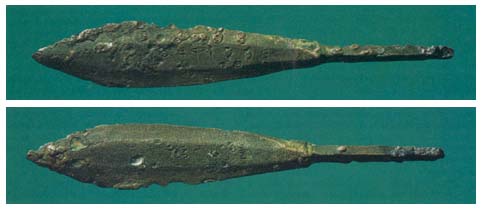Image Details

Zev Radovan
“Arrow of Zakarbaal, King of Amurru,” reads this 4-inch-long bronze arrowhead. Popular among military men in the 11th century B.C., such arrowheads, inscribed with the owner’s name on one face and his title or father’s name on the reverse, may have identified successful archers after battles when it was time to divide the spoils.
Three generations of Amurru royalty have been identified among the 32 inscribed arrowheads that have been published to date (including the five in the book under review): two mention Zakarbaal, one identifies his father, Ben Anath, and another his grandfather, designated MRS
Written in a now rare script that bridges Proto-Canaanite and Early Phoenician linear scripts, the arrowheads are extremely important for tracing the history of writing.
